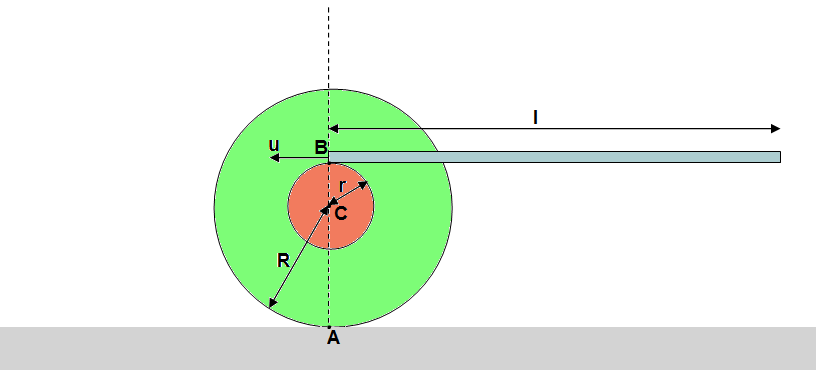Or search by topic
Number and algebra
Geometry and measure
Probability and statistics
Working mathematically
Advanced mathematics
For younger learners
Board and Spool



- Problem
- Getting Started
- Student Solutions

1) Suppose that the spool is rotating with an angular speed $\omega$ about a point A. The spool is a rigid body, this means that the angular speed is the same for all points. Write equations for points B and C:
$$\omega_C = \frac{v_C}{R}, \omega_B = \frac{v_B}{R + r}$$
but $\omega_B = \omega_C = \omega$ and $v_B = u$ because the board does not slip on the spool. Thus, $v_C = \frac{R}{R+r}u$. This means that the speed at which the man is approching the spool is $v = u - v_C = u -\frac{R}{R+r}u =\frac{r}{R+r}u$. This means that the time needed for the man to reach the spool is $$t = \frac{l}{v} = \frac{l(R+r)}{ru}\;.$$
2) The man will travel $s = ut = \frac{l(R+r)}{r}$.
3) If $r = R$ then $s = 2l$.
4) Plug numbers to the equations but do not forget to change units, $t = 6.48\mathrm{s}$ and $s = 6.48\mathrm{m}$.
You may also like
Speedo
Investigate the relationship between speeds recorded and the distance travelled in this kinematic scenario.

